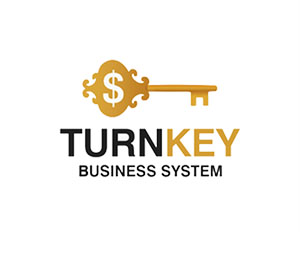AI-Powered Forex: How Intelligent Algorithms are Changing the Game

AI-Powered Forex: How Intelligent Algorithms are Changing the Game
The foreign exchange (Forex) market, the largest and most liquid financial market in the world, is undergoing a technological revolution.
At the heart of this transformation is Artificial Intelligence (AI) , which is reshaping how traders analyze data, execute trades, and manage risks. Intelligent algorithms, machine learning models, and advanced analytics are empowering both retail and institutional traders to make faster, smarter, and more informed decisions.
In this article, we’ll explore how AI is revolutionizing Forex trading and what it means for the future of the industry.
At the heart of this transformation is Artificial Intelligence (AI) , which is reshaping how traders analyze data, execute trades, and manage risks. Intelligent algorithms, machine learning models, and advanced analytics are empowering both retail and institutional traders to make faster, smarter, and more informed decisions.
In this article, we’ll explore how AI is revolutionizing Forex trading and what it means for the future of the industry.

AI-Powered Forex: How Intelligent Algorithms are Changing the Game
1. Predictive Analytics: Forecasting Market Movements
One of the most significant contributions of AI to Forex trading is its ability to process vast amounts of data and identify patterns that humans might miss. Using predictive analytics, AI-powered systems can forecast market movements with remarkable accuracy.
How It Works :
AI algorithms analyze historical price data, economic indicators, news sentiment, and even social media trends to predict future price changes. For example, natural language processing (NLP) can scan thousands of news articles and tweets to gauge market sentiment about a particular currency.
Benefits :
Traders can anticipate trends before they materialize.
Reduces reliance on guesswork or intuition.
Helps identify high-probability trading opportunities.
Real-Life Example :
A hedge fund in New York uses AI-driven predictive models to trade EUR/USD pairs, achieving consistent profits by identifying subtle correlations between macroeconomic events and currency movements.
2. Algorithmic Trading: Speed and Precision
Algorithmic trading, powered by AI, has become a cornerstone of modern Forex trading. These intelligent algorithms execute trades at lightning speed, far surpassing human capabilities.
Key Features :
Trades are executed based on pre-defined rules and real-time data.
High-frequency trading (HFT) bots can place thousands of orders per second, capitalizing on tiny price discrepancies.
Machine learning allows algorithms to adapt and improve over time.
Advantages :
Eliminates emotional decision-making.
Ensures trades are executed at optimal moments.
Backtesting enables traders to refine strategies using historical data.
Impact :
Algorithmic trading now accounts for a significant portion of Forex market activity, making it more efficient and competitive.
3. Risk Management: Smarter and Safer Trading
Risk management is critical in Forex trading, where volatility can lead to significant losses. AI enhances risk management by providing real-time insights and proactive solutions.
Applications :
AI tools monitor positions and alert traders to potential margin calls or excessive exposure.
Machine learning models analyze past trades to identify patterns that led to losses, helping traders avoid repeating mistakes.
Automated stop-loss and take-profit orders reduce the risk of human error.
Example :
A broker in Europe uses AI-powered risk management software to track client accounts and prevent over-leveraging, significantly reducing default rates.
One of the most significant contributions of AI to Forex trading is its ability to process vast amounts of data and identify patterns that humans might miss. Using predictive analytics, AI-powered systems can forecast market movements with remarkable accuracy.
How It Works :
AI algorithms analyze historical price data, economic indicators, news sentiment, and even social media trends to predict future price changes. For example, natural language processing (NLP) can scan thousands of news articles and tweets to gauge market sentiment about a particular currency.
Benefits :
Traders can anticipate trends before they materialize.
Reduces reliance on guesswork or intuition.
Helps identify high-probability trading opportunities.
Real-Life Example :
A hedge fund in New York uses AI-driven predictive models to trade EUR/USD pairs, achieving consistent profits by identifying subtle correlations between macroeconomic events and currency movements.
2. Algorithmic Trading: Speed and Precision
Algorithmic trading, powered by AI, has become a cornerstone of modern Forex trading. These intelligent algorithms execute trades at lightning speed, far surpassing human capabilities.
Key Features :
Trades are executed based on pre-defined rules and real-time data.
High-frequency trading (HFT) bots can place thousands of orders per second, capitalizing on tiny price discrepancies.
Machine learning allows algorithms to adapt and improve over time.
Advantages :
Eliminates emotional decision-making.
Ensures trades are executed at optimal moments.
Backtesting enables traders to refine strategies using historical data.
Impact :
Algorithmic trading now accounts for a significant portion of Forex market activity, making it more efficient and competitive.
3. Risk Management: Smarter and Safer Trading
Risk management is critical in Forex trading, where volatility can lead to significant losses. AI enhances risk management by providing real-time insights and proactive solutions.
Applications :
AI tools monitor positions and alert traders to potential margin calls or excessive exposure.
Machine learning models analyze past trades to identify patterns that led to losses, helping traders avoid repeating mistakes.
Automated stop-loss and take-profit orders reduce the risk of human error.
Example :
A broker in Europe uses AI-powered risk management software to track client accounts and prevent over-leveraging, significantly reducing default rates.
4. Sentiment Analysis: Harnessing News and Social Media
Market sentiment plays a crucial role in currency movements, and AI excels at analyzing unstructured data like news articles, press releases, and social media posts.
How It Works :
AI tools use natural language processing (NLP) to interpret the tone and context of text. For instance, if central bank officials make hawkish statements, AI can quickly assess their impact on currency pairs.
Benefits :
Provides real-time insights into market sentiment.
Helps traders react faster to breaking news or geopolitical events.
Reduces reliance on manual research.
Case Study :
During the 2022 Ukraine-Russia conflict, AI-driven sentiment analysis tools helped traders anticipate sharp declines in the Russian ruble and adjust their positions accordingly.
5. Personalized Trading Strategies
AI is enabling traders to develop personalized strategies tailored to their risk tolerance, goals, and trading style.
How It Works :
Machine learning algorithms analyze a trader’s past performance and preferences to recommend optimized strategies. For example, an AI tool might suggest adjusting leverage or focusing on specific currency pairs based on historical success rates.
Advantages :
Enhances trading efficiency by aligning strategies with individual strengths.
Helps novice traders learn faster by providing actionable recommendations.
Continuously adapts to changing market conditions.
6. Fraud Detection and Security
Fraud and cyber threats are major concerns in the Forex market. AI-powered systems are enhancing security by detecting suspicious activities and preventing fraud.
Applications :
AI monitors transactions for signs of money laundering or unauthorized access.
Behavioral analytics detect anomalies in user activity, such as unusual login locations or trading patterns.
Blockchain integration ensures transparent and tamper-proof records.
Impact :
Brokers and regulators are increasingly adopting AI to combat fraud, ensuring a safer trading environment for all participants.
Market sentiment plays a crucial role in currency movements, and AI excels at analyzing unstructured data like news articles, press releases, and social media posts.
How It Works :
AI tools use natural language processing (NLP) to interpret the tone and context of text. For instance, if central bank officials make hawkish statements, AI can quickly assess their impact on currency pairs.
Benefits :
Provides real-time insights into market sentiment.
Helps traders react faster to breaking news or geopolitical events.
Reduces reliance on manual research.
Case Study :
During the 2022 Ukraine-Russia conflict, AI-driven sentiment analysis tools helped traders anticipate sharp declines in the Russian ruble and adjust their positions accordingly.
5. Personalized Trading Strategies
AI is enabling traders to develop personalized strategies tailored to their risk tolerance, goals, and trading style.
How It Works :
Machine learning algorithms analyze a trader’s past performance and preferences to recommend optimized strategies. For example, an AI tool might suggest adjusting leverage or focusing on specific currency pairs based on historical success rates.
Advantages :
Enhances trading efficiency by aligning strategies with individual strengths.
Helps novice traders learn faster by providing actionable recommendations.
Continuously adapts to changing market conditions.
6. Fraud Detection and Security
Fraud and cyber threats are major concerns in the Forex market. AI-powered systems are enhancing security by detecting suspicious activities and preventing fraud.
Applications :
AI monitors transactions for signs of money laundering or unauthorized access.
Behavioral analytics detect anomalies in user activity, such as unusual login locations or trading patterns.
Blockchain integration ensures transparent and tamper-proof records.
Impact :
Brokers and regulators are increasingly adopting AI to combat fraud, ensuring a safer trading environment for all participants.
7. Democratization of Forex Trading
AI is making Forex trading more accessible to retail traders by lowering barriers to entry and providing advanced tools at affordable costs.
Examples :
Mobile apps with AI-driven signals allow beginners to trade confidently.
Robo-advisors provide automated portfolio management, eliminating the need for extensive trading knowledge.
Educational platforms use AI to personalize learning paths for new traders.
Result :
Retail traders now have access to tools and insights that were once exclusive to institutional investors.
8. Challenges and Ethical Considerations
While AI offers numerous benefits, it also presents challenges and ethical concerns that must be addressed:
Over-Reliance on AI : Traders may become too dependent on algorithms, neglecting their own judgment.
Bias in Algorithms : AI models trained on biased data can produce skewed results.
Regulatory Concerns : The rapid adoption of AI in trading raises questions about transparency and accountability.
Cybersecurity Risks : As AI systems become more integrated, they also become prime targets for hackers.
To mitigate these risks, traders and brokers must adopt robust safeguards and ensure transparency in AI-driven processes.
Real-Life Success Stories
AI-Powered Hedge Fund :
A UK-based hedge fund uses AI to analyze global economic data and execute Forex trades. Their AI model consistently outperforms traditional strategies, delivering double-digit annual returns.
Retail Trader Success :
A part-time trader from Canada leveraged AI-driven sentiment analysis tools to predict GBP/USD movements during Brexit negotiations, turning a small investment into substantial profits.
Broker Innovation :
A MetaTrader broker integrated AI-powered chatbots to enhance customer support, resulting in higher client satisfaction and retention rates.
AI is making Forex trading more accessible to retail traders by lowering barriers to entry and providing advanced tools at affordable costs.
Examples :
Mobile apps with AI-driven signals allow beginners to trade confidently.
Robo-advisors provide automated portfolio management, eliminating the need for extensive trading knowledge.
Educational platforms use AI to personalize learning paths for new traders.
Result :
Retail traders now have access to tools and insights that were once exclusive to institutional investors.
8. Challenges and Ethical Considerations
While AI offers numerous benefits, it also presents challenges and ethical concerns that must be addressed:
Over-Reliance on AI : Traders may become too dependent on algorithms, neglecting their own judgment.
Bias in Algorithms : AI models trained on biased data can produce skewed results.
Regulatory Concerns : The rapid adoption of AI in trading raises questions about transparency and accountability.
Cybersecurity Risks : As AI systems become more integrated, they also become prime targets for hackers.
To mitigate these risks, traders and brokers must adopt robust safeguards and ensure transparency in AI-driven processes.
Real-Life Success Stories
AI-Powered Hedge Fund :
A UK-based hedge fund uses AI to analyze global economic data and execute Forex trades. Their AI model consistently outperforms traditional strategies, delivering double-digit annual returns.
Retail Trader Success :
A part-time trader from Canada leveraged AI-driven sentiment analysis tools to predict GBP/USD movements during Brexit negotiations, turning a small investment into substantial profits.
Broker Innovation :
A MetaTrader broker integrated AI-powered chatbots to enhance customer support, resulting in higher client satisfaction and retention rates.
Conclusion
AI-powered Forex trading is transforming the industry by enhancing efficiency, accuracy, and accessibility. From predictive analytics and algorithmic trading to risk management and fraud detection, intelligent algorithms are redefining how traders interact with the market. As AI continues to evolve, its impact on Forex trading will only grow stronger.
For traders, embracing AI is no longer optional—it’s essential for staying competitive in an increasingly tech-driven market. By leveraging these innovations responsibly, traders can unlock new opportunities and achieve greater success.
Are you ready to join the AI revolution in Forex trading? The future of finance is here, and it’s powered by intelligence.
AI-powered Forex, algorithmic trading, predictive analytics, sentiment analysis, risk management, machine learning, Forex market, artificial intelligence, trading algorithms, high-frequency trading
AI-powered Forex trading is transforming the industry by enhancing efficiency, accuracy, and accessibility. From predictive analytics and algorithmic trading to risk management and fraud detection, intelligent algorithms are redefining how traders interact with the market. As AI continues to evolve, its impact on Forex trading will only grow stronger.
For traders, embracing AI is no longer optional—it’s essential for staying competitive in an increasingly tech-driven market. By leveraging these innovations responsibly, traders can unlock new opportunities and achieve greater success.
Are you ready to join the AI revolution in Forex trading? The future of finance is here, and it’s powered by intelligence.
AI-powered Forex, algorithmic trading, predictive analytics, sentiment analysis, risk management, machine learning, Forex market, artificial intelligence, trading algorithms, high-frequency trading









Report
My comments